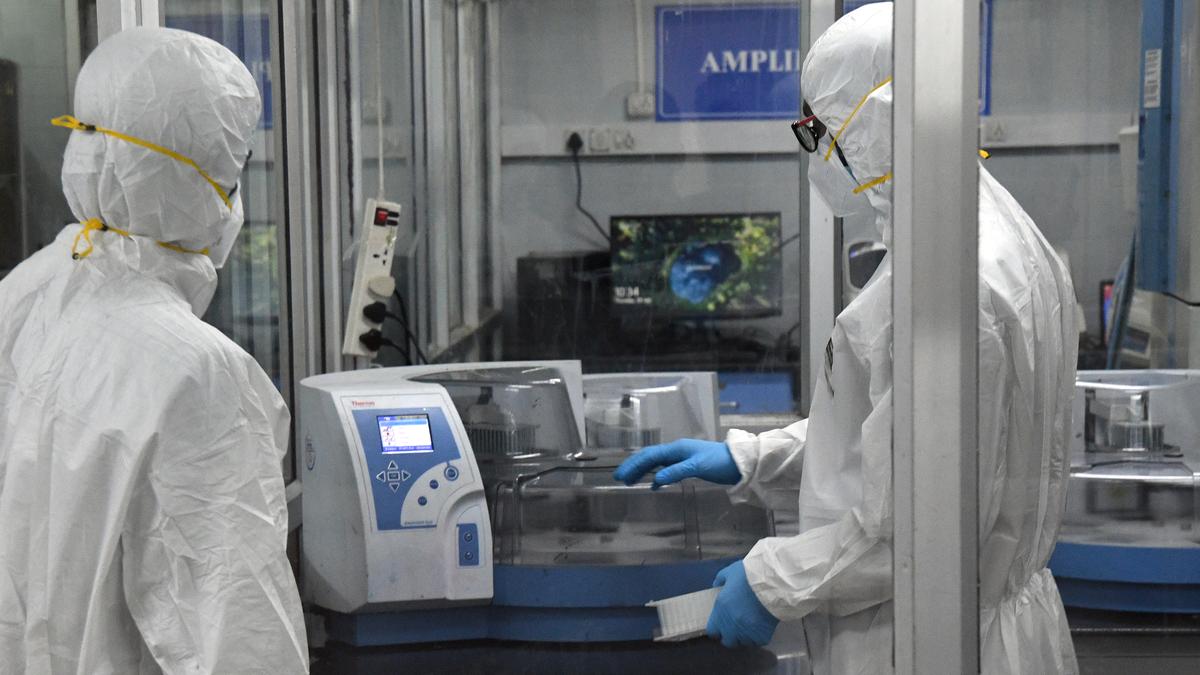
Image used for representational purpose.
| Photo Credit: S.R. Raghunathan
The story so far: The office of the Principal Scientific Adviser to the Government of India, Confederation of Indian Industry (CII) and the Centre for Technology, Innovation, and Economic Research have released a detailed assessment of public-funded research and development in India. In all, 244 R&D organisations, affiliated to various ministries, participated in the study, ‘Evaluation of Innovation Excellence Indicators of Public Funded R&D Organizations’. However, scientific institutions such as those belonging to defence research, space, and atomic energy research, which make up the dominant share of India’s overall R&D spend, were excluded from the study, due to the “sensitive nature” of their work. Academic institutions and universities also weren’t part of the study.

What was the purpose of this study?
The survey was administered via an online questionnaire and was designed to capture the contributions of public-funded R&D organisations in areas critical to India’s growth. The key question that the authors of the report sought to answer was whether these labs were largely engaged in curiosity-driven academic science, or geared towards developing products and new innovations that aligned with the demands of industry. The authors sought to “capture and evaluate” innovation indicators of public-funded R&D labs/institutes. “The analysis and recommendations in this report were meant to guide the public-funded R&D labs/institutes to increase their contributions meaningfully towards a number of Sustainable Development Goals and national priorities through their research capabilities, to help the nation navigate various challenges on the socio-economic front, from health challenges to ensuring a more diverse scientific base through opportunities for women scientists, and finally to contribute to skilling and creating meaningful employment by working alongside industry and startups,” the study noted.

How was it conducted?
These big-picture questions were broken down into 62 parameters. These included questions on the labs’ annual spend on R&D, number of young scientists, patents filed, technologies developed, participation of women scientists and their contribution to ‘national missions’ such as the ‘Deep Ocean Mission,’ ‘National Quantum Mission’ etc. Labs/institutes self selected themselves as ‘Basic, Applied or Services’ or as ‘hybrid’ — a lab/institute whose research straddles more than one of the three research categories of basic, applied and services. All the data submitted by the labs/institutes were accompanied with the director’s sign-off indicating that the submitted data was authentic and valid.
What were the key findings?
A significant finding was that only about 25% of the labs surveyed gave incubation support to startups and only 16% provided support to ‘deep tech’ startups. Only 15% collaborated with industry overseas and only half of them opened their facilities to researchers and students from outside. About half the labs/institutes contributed to national policies and developing technologies targeting the ‘Make in India’ initiative. The Skill India Mission was being targeted by around 35% of the organisations while around 30% of the organisations said they were targeting the Swachh Bharat Mission. A large number of labs/institutes reported a decrease in the number of permanent staff in 2022-23 compared to the previous year and an increased reliance — from 17,234 to 19,625 — on contractual staff. The median share of young researchers increased in 2022-23 to around 58% from 54% in the previous year. The combined budget of 155 labs/institutes increased from ₹9,924 crore in 2017-18 to ₹13,162 crore in 2022-23. The total number of scientific staff and the share of women scientists within scientific staff remained stagnant across 2021-2023.
Does the report make recommendations?
As part of its recommendations, the report advocates that every lab should be “mandated to review their existing mandates” and align themselves to ‘Viksit Bharat.’ The mandate is to focus on “critical technologies” as directed by the government, and that public-funded R&D organisations must adopt this strategy on a “war footing”. They should work closely with industry, as well as each other. The report recommends setting up of Section 8 companies (non profit organisations registered under the Ministry of Corporate Affairs) to provide support to startups, opening research and testing facilities and, improving cross-linkages with higher educational institutes.
Published – May 04, 2025 01:23 am IST
Anurag Dhole is a seasoned journalist and content writer with a passion for delivering timely, accurate, and engaging stories. With over 8 years of experience in digital media, she covers a wide range of topics—from breaking news and politics to business insights and cultural trends. Jane's writing style blends clarity with depth, aiming to inform and inspire readers in a fast-paced media landscape. When she’s not chasing stories, she’s likely reading investigative features or exploring local cafés for her next writing spot.






